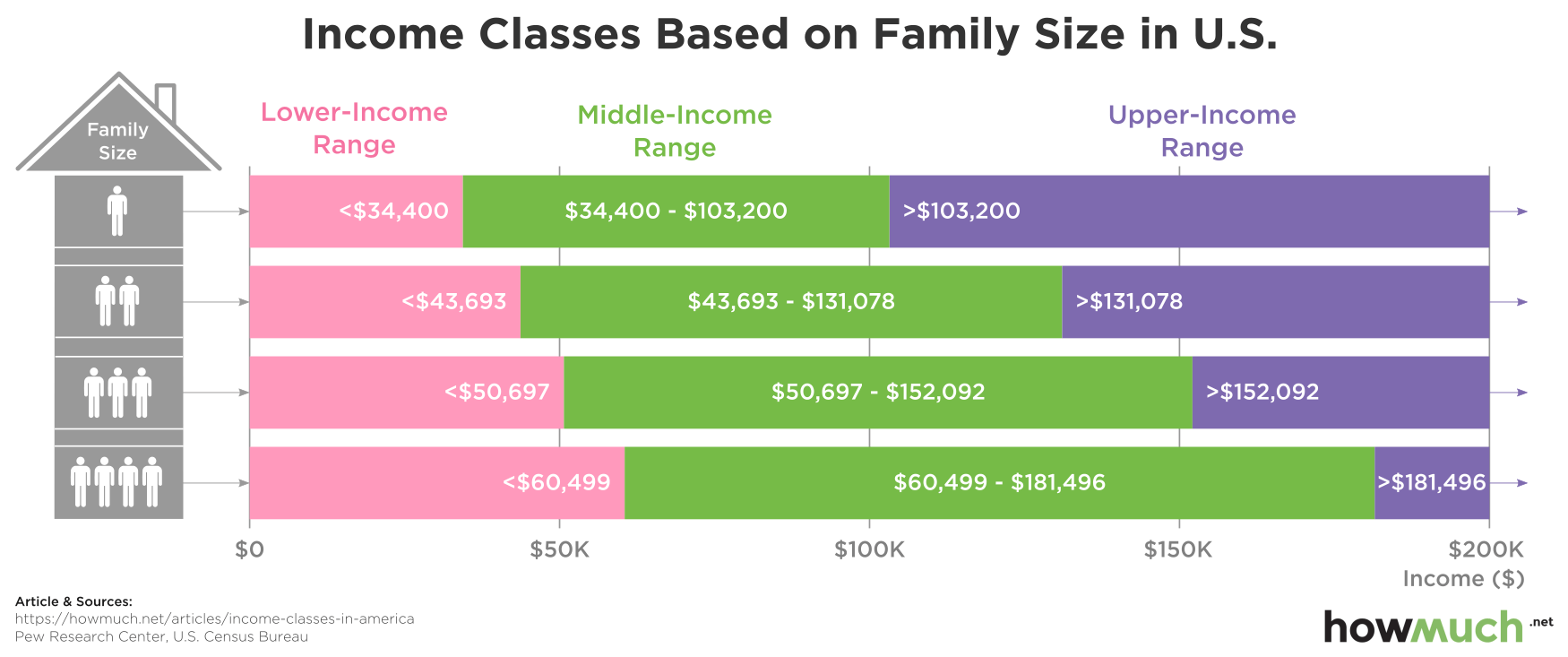A social group that consists of well-educated people, such as doctors, lawyers, and teachers, who have good jobs and are not poor, but are not very rich: The upper middle class tend to go into business or the professions, becoming, for example, lawyers, doctors, or accountants. Upper, Middle and Lower Class. Upper class refers to the very wealthiest and powerful people in society, often the very top percentage of the population. They are usually connected to politics and includes anyone in the aristocracy or nobility. Basically the really posh people. Defining the middle class on the other hand is a little trickier.
Twitter lists private. In developed nations across the world, the lower middle class is a subdivision of the greater middle class. Universally, the term refers to the group of middle class households or individuals who have not attained the status of the upper middle class associated with the higher realms of the middle class, hence the name.[1][2][3][4][5][6][7][8]

United States
In American society, the middle class may be divided into two or three sub-groups. When divided into two parts, the lower middle class, also sometimes simply referred to as 'middle class', consists of roughly one third of households, roughly twice as large as the upper middle or managerial class. Common occupation fields are semi-professionals, such as lower-level managers, small business owners and skilled craftsmen. These individuals commonly have some college education or perhaps a Bachelor's degree and earn a comfortable living. Already among the largest social classes, rivaled only by the working class, the American lower middle class is diverse and growing.[9][10]
What Is The Definition Of Middle Class
Though not common in sociological models, the middle class may be divided into three sections in vernacular language usage. In this system the term lower middle class relates to the demographic referred to as working class in most sociological models. Yet some class models, such as those by sociologist Leonard Beeghley, suggest the middle class to be one cohesive socio-economic demographic, including the demographics otherwise referred to as lower, simply middle or upper middle class in one group comprising about 45% of households.[11]
Social class in the US at a glance[edit]

| Dennis Gilbert, 2002 | William Thompson & Joseph Hickey, 2005 | Leonard Beeghley, 2004 | |||
|---|---|---|---|---|---|
| Class | Typical characteristics | Class | Typical characteristics | Class | Typical characteristics |
| Capitalist class (1%) | Top-level executives, high-rung politicians, heirs. Ivy League education common. | Upper class (1%) | Top-level executives, celebrities, heirs; income of $500,000+ common. Ivy league education common. | The super-rich (0.9%) | Multi-millionaires whose incomes commonly exceed $350,000; includes celebrities and powerful executives/politicians. Ivy League education common. |
| Upper middle class[1] (15%) | Highly-educated (often with graduate degrees), most commonly salaried, professionals and middle management with large work autonomy. | Upper middle class[1] (15%) | Highly-educated (often with graduate degrees) professionals & managers with household incomes varying from the high 5-figure range to commonly above $100,000. | The rich (5%) | Households with net worth of $1 million or more; largely in the form of home equity. Generally have college degrees. |
| Middle class (plurality/ majority?; ca. 46%) | College-educated workers with considerably higher-than-average incomes and compensation; a man making $57,000 and a woman making $40,000 may be typical. | ||||
| Lower middle class (30%) | Semi-professionals and craftsmen with a roughly average standard of living. Most have some college education and are white-collar. | Lower middle class (32%) | Semi-professionals and craftsmen with some work autonomy; household incomes commonly range from $35,000 to $75,000. Typically, some college education. | ||
| Working class (30%) | Clerical and most blue-collar workers whose work is highly routinized. Standard of living varies depending on number of income earners, but is commonly just adequate. High school education. | ||||
| Working class (32%) | Clerical, pink- and blue-collar workers with often low job security; common household incomes range from $16,000 to $30,000. High school education. | Working class (ca. 40–45%) | Blue-collar workers and those whose jobs are highly routinized with low economic security; a man making $40,000 and a woman making $26,000 may be typical. High school education. | ||
| Working poor (13%) | Service, low-rung clerical and some blue-collar workers. High economic insecurity and risk of poverty. Some high school education. | ||||
| Lower class (ca. 14–20%) | Those who occupy poorly-paid positions or rely on government transfers. Some high school education. | ||||
| Underclass (12%) | Those with limited or no participation in the labor force. Reliant on government transfers. Some high school education. | The poor (ca. 12%) | Those living below the poverty line with limited to no participation in the labor force; a household income of $18,000 may be typical. Some high school education. | ||
| |||||
Usage in popular culture[edit]
The lower-middle class is frequently portrayed in television and film. Notable examples include the television shows The Simpsons, Malcolm in the Middle, Married.. Vuescan pro for mac. with Children, 2point4 children, The Middle, Family Guy, Family Matters and Veronica Mars as well as films such as Lady Bird and Soul Food.
See also[edit]
References[edit]
- Notes
- ^The New York Times. 15 May 2005 https://www.nytimes.com/packages/html/national/20050515_CLASS_GRAPHIC/index_01.html. Retrieved 23 November 2011.Missing or empty
|title=(help) - ^Brooks, David (17 November 2008). The New York Timeshttps://www.nytimes.com/2008/11/18/opinion/18brooks.html. Retrieved 23 November 2011.Missing or empty
|title=(help) - ^Decca Aitkenhead (19 October 2007). 'Class rules'. The Guardian. UK. Retrieved 23 November 2011.
- ^Andy Beckett (24 July 2010). 'Is the British middle class an endangered species?'. The Guardian. London. Retrieved 23 November 2011.
- ^Johnson, Reed (31 May 2009). Los Angeles Timeshttp://www.latimes.com/entertainment/news/la-ca-africanamerican31-2009may31,0,7855305.story. Retrieved 23 November 2011.Missing or empty
|title=(help) - ^The Wall Street Journal. 19 August 2010 https://blogs.wsj.com/economics/2010/08/19/much-of-indian-middle-class-is-almost-poor/. Retrieved 23 November 2011.Missing or empty
|title=(help) - ^Weisman, Jonathan (26 March 2010). The Wall Street Journalhttps://www.wsj.com/articles/SB10001424052748704094104575143951112969586. Retrieved 23 November 2011.Missing or empty
|title=(help) - ^Connors, Will (18 January 2011). The Wall Street Journalhttps://www.wsj.com/articles/SB10001424052748704515904576076622892749928. Retrieved 23 November 2011.Missing or empty
|title=(help) - ^Gilbert 2008.
- ^Thompson & Hickey 2004.
- ^Beeghley, L. (2004). The Structure of Social Stratification in the United States. Boston, MA: Allyn & Bacon, Pearson.
- Bibliography
- Bailey, Peter (1999). 'White Collars, Gray Lives? The Lower Middle Class Revisited'. Journal of British Studies. 38 (3): 273–290. doi:10.1086/386195. JSTOR176057.
- Felski, Rita (2000). 'Nothing to Declare: Identity, Shame, and the Lower Middle Class'. PMLA. 115 (1): 34–45. JSTOR463229.
- Gilbert, Dennis L. (2008). The American Class Structure in an Age of Growing Inequality (7th ed.). Thousand Oaks, CA: Pine Forge Press. ISBN978-1-412-95414-3.
- Marx, Karl; Engels, Friedrich (1969) [1848]. 'Manifesto of the Communist Party'. Marx/Engels Selected Works, Volume I (pp. 98–137). Moscow: Progress Publishers.
- Mayer, Arno J. (1975). 'The Lower Middle Class as Historical Problem'. The Journal of Modern History. 47 (3): 409–436. doi:10.1086/241338. JSTOR1876000.
- Thompson, William E.; Hickey, Joseph V. (2004). Society in Focus (5th ed.). London: Pearson. ISBN978-0-205-41365-2.
- Wiener, Jonathan M. (1976). 'Marxism and the Lower Middle Class: A Response to Arno Mayer'. The Journal of Modern History. 48 (4): 666–671. doi:10.1086/241489. JSTOR1880197.
Working Class


Middle Class Meaning In Tagalog
Middle Class Income Range 2021

